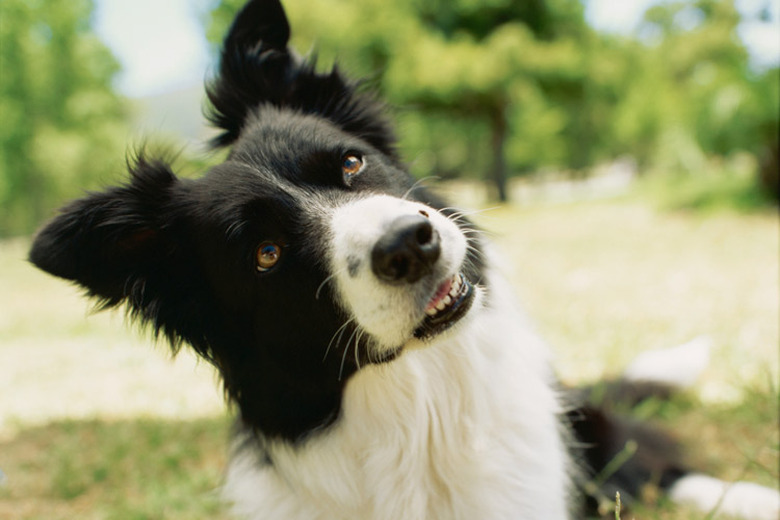Why Will My Dog Only Pee At Home?
A one- or two-word command will have your pup peeing in places he never did before.
Your pup probably has perfectly good reasons for killing only your grass and making yellow snow only in your yard: home is familiar and other places are full of scary things. While holding it until he gets back home likely won't cause any problems, you'd probably rather he not be too nervous to lift his leg while away from home. A little training will have your pal peeing on command.
Nerves
Picture a small yapping pup who sits behind his fence and tells off massive canines whose heads are bigger than his body—he's big and bad because it's his yard and he's safe and sound in it. Your pup feels secure in his own yard, and when he's in his comfort zone, he's more apt to squat or lift a leg and relieve himself. When you take him outside that comfort zone, scary things are about, such as other people and honking horns. If he's scared, he may not urinate, even if he really has to go. Well-socialized puppies usually get over this fairly quickly, once they understand not everything strange is evil. Older dogs, however, have deep-seated fears that can make it very difficult to persuade them to use the bathroom away from the house.
Familiar Surfaces and Smells
When your dog first learned that peeing outside was rewarding and a good thing, he probably did his business on the same surface every day. If when you take him on walks, you pass over different surfaces than he's used to peeing on, a thought may enter his mind: the strange surface is not something he's ever peed on before and therefore he shouldn't empty his bladder on it. He may also feel uncomfortable on the surface, which can make him hold it. In addition to familiar surfaces, familiar smells key your dog into where to pee. The American Society for the Prevention of Cruelty to Animals notes the smell of your pup's urine in your yard makes him want to continue using that same spot as his potty place.
Negative Experiences
Negative experiences in the past could be to blame for your pup's hesitancy to lift his leg while on walks now. Suppose as a youngster he began peeing on the sidewalk, but his owner—whether you or someone else at the time—yanked at his leash and yelled at him to stop. He would have viewed that yanking and yelling as punishment for what he was about to do. While some dogs may associate that type of punishment with peeing on concrete surfaces only, others may associate it with peeing while on walks, thus refusing to pee when away from the house.
Teaching the "Potty" Command
To help your pooch understand that peeing away from his own yard is a good thing, teach him the "Potty" or "Go pee" command. Go out with him in your yard and keep a treat in your pocket. As he lets it flow, say, "Go pee" or something similar. Once he's done, reward him with lots of praise and a treat. Once your pal starts associating the command with the action of peeing—usually after a few days of consistent training—issue the command earlier, such as when he's about to lift his leg or squat. Eventually he'll look to go immediately once you issue the command, which means you can use it while on a walk and he'll hopefully pee when you say to. Vetstreet notes that walking with another dog or visiting places where other dogs typically urinate can encourage your little guy to pee. If you go that route, act excited and give him treats when he pees.
By Chris Miksen
References
Vetstreet: Can I Teach My Dog to Pee on Concrete?
ASPCA: Teaching Your Dog to Eliminate in a Specific Place
About the Author
Located in Pittsburgh, Chris Miksen has been writing instructional articles on a wide range of topics for online publications since 2007. He currently owns and operates a vending business. Miksen has written a variety of technical and business articles throughout his writing career. He studied journalism at the Community College of Allegheny County.
